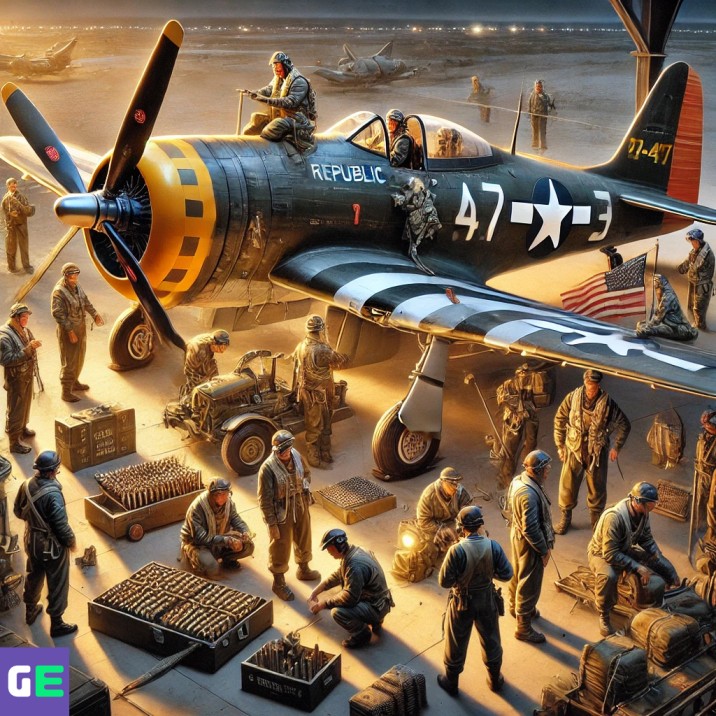Introduction
The F-47 aircraft history is a fascinating chapter in American aviation, showcasing the technological advancements and strategic significance of this legendary fighter jet.
As a crucial part of U.S. military history, the F-47 played a vital role in shaping aerial warfare and influenced future fighter jet designs. In this comprehensive article, we will explore the origins, key features, combat history, technological evolution, and lasting legacy of the F-47 aircraft.
Origins of the F-47 Fighter Jet
The Birth of a Fighter Jet
The F-47 aircraft history dates back to the mid-20th century when aviation engineers sought to develop an advanced fighter jet capable of superior combat performance. The aircraft was originally designed as an improvement over previous models, incorporating cutting-edge technology and enhanced maneuverability.
During this period, the U.S. military required a versatile aircraft that could perform multiple roles, from air-to-air combat to ground attack missions. The F-47 was designed to fulfill these needs, ensuring American air superiority in the evolving battlefield.
The Transition from Older Aircraft Models
Before the F-47, earlier fighter jets lacked the necessary speed, durability, and firepower required for modern warfare. Engineers and designers worked tirelessly to create an aircraft that combined high-speed capabilities with powerful weaponry. The transition to the F-47 marked a new era in fighter jet development, setting the foundation for future aerial combat innovations.
The Role of Aviation Advancements in the F-47’s Development
Several key technological advancements contributed to the creation of the F-47. Improvements in aerodynamics, jet propulsion, and avionics allowed the aircraft to achieve greater speeds and improved maneuverability. Additionally, the integration of advanced weapon systems gave the F-47 a significant edge over its predecessors.
Key Features and Design of the F-47
Engine Specifications and Performance Capabilities
One of the most impressive aspects of the F-47 aircraft history is its powerful engine. The aircraft was equipped with a high-performance jet engine that allowed it to reach impressive speeds while maintaining fuel efficiency. This powerful propulsion system made the F-47 one of the most reliable and effective fighter jets of its time.
Aerodynamic Design and Maneuverability
The F-47 was designed with a sleek aerodynamic structure that enhanced its speed and maneuverability. The aircraft’s lightweight frame and advanced wing design allowed for superior control during high-speed dogfights and complex aerial maneuvers.
Weaponry and Defensive Capabilities
In addition to its speed and agility, the F-47 was equipped with state-of-the-art weaponry. The aircraft featured a combination of machine guns, air-to-air missiles, and ground attack capabilities, making it a formidable force on the battlefield. Defensive measures, including advanced radar systems and countermeasures, ensured that the F-47 remained a dominant presence in combat.
The Role of the F-47 in U.S. Military History
Establishing American Air Superiority
The F-47 aircraft history is closely tied to the U.S. military’s efforts to establish air superiority. As conflicts arose around the world, the F-47 was deployed to maintain dominance in the skies. Its advanced design and combat effectiveness allowed the U.S. Air Force to carry out critical missions with precision and efficiency.
Major Missions and Operations Involving the F-47
Throughout its service history, the F-47 was involved in several key military operations. These missions demonstrated the aircraft’s versatility and ability to adapt to different combat scenarios. Whether engaging enemy aircraft in dogfights or providing support for ground troops, the F-47 proved to be an invaluable asset.
Influence on Future Fighter Jet Designs
The success of the F-47 paved the way for future fighter jet innovations. Lessons learned from its design and performance were applied to the development of next-generation aircraft, ensuring continued advancements in military aviation. The influence of the F-47 can still be seen in modern fighter jets used by the U.S. Air Force today.
The F-47 in Combat: Notable Battles and Engagements
Key Battles Where the F-47 Played a Crucial Role
The F-47 aircraft history includes several notable battles where the aircraft proved its worth in combat. These engagements showcased the fighter jet’s speed, firepower, and resilience in the face of enemy opposition.
How the F-47 Performed Against Enemy Aircraft
The F-47’s superior design allowed it to outperform many enemy aircraft. Its advanced weapon systems and high-speed capabilities gave pilots the upper hand in aerial combat. Reports from battlefields highlight the aircraft’s effectiveness in both offensive and defensive roles.
Pilot Experiences and Testimonials
Veteran pilots who flew the F-47 often speak highly of the aircraft’s reliability and combat effectiveness. Many describe it as a game-changer in air warfare, providing them with the confidence and capability to engage in high-stakes missions.
Technological Evolution and Upgrades
Improvements Made to the F-47 Over Time
As technology advanced, so did the F-47. Engineers introduced several upgrades to enhance its performance, including improved engines, advanced radar systems, and upgraded weaponry. These improvements ensured that the F-47 remained competitive in a rapidly evolving battlefield.
How Advancements Enhanced the F-47’s Capabilities
Each technological enhancement made the F-47 a more formidable aircraft. Faster speeds, better fuel efficiency, and enhanced targeting systems allowed pilots to execute missions with greater precision and effectiveness.
The Eventual Transition to Newer Fighter Jets
Despite its success, the F-47 was eventually replaced by newer fighter jets with even more advanced technology. However, the legacy of the F-47 continues to influence modern aircraft design, and its contributions to aviation remain significant.
The Legacy of the F-47 Aircraft
Influence on Modern Fighter Jets
The F-47 aircraft history has had a lasting impact on the development of modern fighter jets. Many of the design principles and technological advancements first introduced with the F-47 are still in use today.
Museums and Locations Where the F-47 is Preserved in the U.S.
For aviation enthusiasts and history buffs, several museums across the United States showcase the F-47. These exhibits provide an opportunity to learn more about the aircraft’s history and see it up close.
The Lasting Impact of the F-47 Aircraft History on Aviation
Even though the F-47 is no longer in active service, its contributions to aviation and military strategy are undeniable. The aircraft’s legacy continues to be celebrated by historians, pilots, and aviation experts worldwide.
Conclusion
The F-47 aircraft history is a testament to American innovation and military excellence. From its early development to its crucial role in combat, the F-47 has left a lasting impact on U.S. aviation history. As we look back at its evolution, it’s clear that the F-47 was more than just a fighter jet—it was a symbol of strength, resilience, and technological progress.
By preserving the F-47 aircraft history, we ensure that future generations can appreciate the advancements that shaped modern air warfare. Whether displayed in museums or remembered in historical records, the F-47 remains a legendary aircraft that helped define an era of aviation excellence Read more
FAQs
1. What is the significance of the F-47 aircraft in U.S. aviation history?
The F-47 aircraft history holds great significance in U.S. aviation, as it was one of the most advanced fighter jets of its time. Designed for high-speed combat and strategic aerial missions, the F-47 played a crucial role in shaping modern fighter jet technology. It was used extensively by the U.S. military and set the standard for future aircraft.
From its development phase to its deployment in various missions, the F-47 demonstrated exceptional versatility and combat efficiency. The fighter jet’s impact on aerial warfare, technological advancements, and pilot training programs makes it a key part of U.S. military aviation history.
2. When was the F-47 aircraft developed, and who designed it?
The F-47 aircraft history dates back to the mid-20th century when aviation engineers sought to create a superior fighter jet. Designed by some of the best aeronautical experts in the United States, the F-47 was an upgraded version of earlier aircraft models, integrating advanced features such as improved speed, better aerodynamics, and state-of-the-art weaponry.
The development process involved rigorous testing and multiple prototype iterations to ensure optimal performance. As a result, the F-47 emerged as a game-changer in aerial combat, proving to be a reliable and efficient aircraft for military operations.
3. What made the F-47 different from other fighter jets of its time?
The F-47 aircraft history is notable for its groundbreaking innovations that set it apart from other fighter jets. Unlike its predecessors, the F-47 was built with an advanced propulsion system, allowing for higher speeds, increased agility, and superior combat performance.
Additionally, the aircraft featured cutting-edge avionics and weaponry, making it a formidable opponent in dogfights. The F-47’s design also incorporated reinforced armor and upgraded defensive mechanisms, enhancing its survivability in battle. These advancements made the F-47 a preferred choice for military pilots and a significant asset in U.S. air operations.
4. What were the primary combat roles of the F-47 aircraft?
The F-47 aircraft history highlights its diverse combat roles, making it a versatile asset for the U.S. military. This fighter jet was used for air-to-air combat, ground attack missions, reconnaissance, and escort operations.
During its operational period, the F-47 played a crucial role in providing air superiority by engaging enemy aircraft in intense dogfights. Additionally, its powerful armament allowed it to conduct precision strikes on enemy ground targets, effectively supporting ground forces. The adaptability of the F-47 in various combat scenarios demonstrated its effectiveness and solidified its reputation as a legendary aircraft.
5. How did the F-47 contribute to U.S. military success in past wars?
The F-47 aircraft history is intertwined with many of the United States’ military successes. This fighter jet was deployed in several critical battles, where it proved to be a decisive factor in achieving air dominance. Its superior speed, agility, and weaponry enabled pilots to execute missions with greater precision and efficiency.
Whether used in defensive operations or offensive strikes, the F-47’s reliability allowed the U.S. Air Force to outmaneuver enemy forces. Military historians credit the F-47 for its role in maintaining American air superiority, which ultimately contributed to successful military campaigns.
6. What technological advancements were introduced with the F-47 aircraft?
The F-47 aircraft history showcases some of the most significant technological advancements in military aviation at the time. Engineers implemented aerodynamic enhancements, improved fuel efficiency, and advanced radar systems, allowing the aircraft to perform better in combat.
One of the most remarkable advancements was the integration of modern targeting systems and weapons control, which improved pilot accuracy in aerial engagements. The use of reinforced materials in the aircraft’s body also increased durability, making the F-47 more resilient in battle. These innovations laid the foundation for future fighter jet developments, influencing many modern aircraft designs.
7. Why was the F-47 eventually retired from military service?
The F-47 aircraft history came to an end as newer fighter jets with superior technology, speed, and weaponry were introduced. As aviation technology advanced, military forces sought faster, more agile, and multi-role aircraft that could outperform the F-47 in combat.
While the F-47 remained an effective fighter jet for several years, advancements in stealth technology, supersonic flight, and precision weaponry led to the development of next-generation aircraft, ultimately phasing out the F-47. Despite its retirement, the F-47’s legacy remains strong, influencing many of today’s cutting-edge fighter jets.
8. Where can aviation enthusiasts see the F-47 aircraft today?
For those interested in the F-47 aircraft history, several aviation museums across the United States house this legendary fighter jet. Visitors can explore well-preserved models and learn about the F-47’s contributions to military aviation.
Some of the most notable locations where the F-47 is displayed include:
-
National Air and Space Museum in Washington, D.C.
-
National Museum of the U.S. Air Force in Ohio
-
Smithsonian Institution
-
Various state aviation museums featuring military aircraft exhibits
These museums offer an immersive experience, allowing visitors to appreciate the engineering marvel and historical significance of the F-47.
9. How does the F-47 aircraft history continue to impact modern aviation?
The F-47 aircraft history has had a lasting impact on modern aviation by inspiring fighter jet design, technological advancements, and combat strategies. Many of the features pioneered by the F-47, such as aerodynamic efficiency, advanced targeting systems, and enhanced propulsion technology, continue to influence the development of today’s aircraft.
Additionally, the F-47’s success in combat operations shaped modern air combat tactics and pilot training methodologies. The lessons learned from the F-47’s performance have contributed to the refinement of modern fighter jets, ensuring that future aircraft continue to evolve for superior combat effectiveness.
10. What makes the F-47 a legendary aircraft in aviation history?
The F-47 aircraft history is legendary due to its remarkable engineering, combat success, and impact on military aviation. This fighter jet was not only ahead of its time in terms of technology and performance but also played a crucial role in shaping U.S. military airpower.
Pilots who flew the F-47 have described it as a reliable, powerful, and effective aircraft, capable of executing complex missions with precision. Even though the F-47 is no longer in service, its legacy remains strong in aviation museums, historical records, and modern fighter jet designs.













Leave a Reply